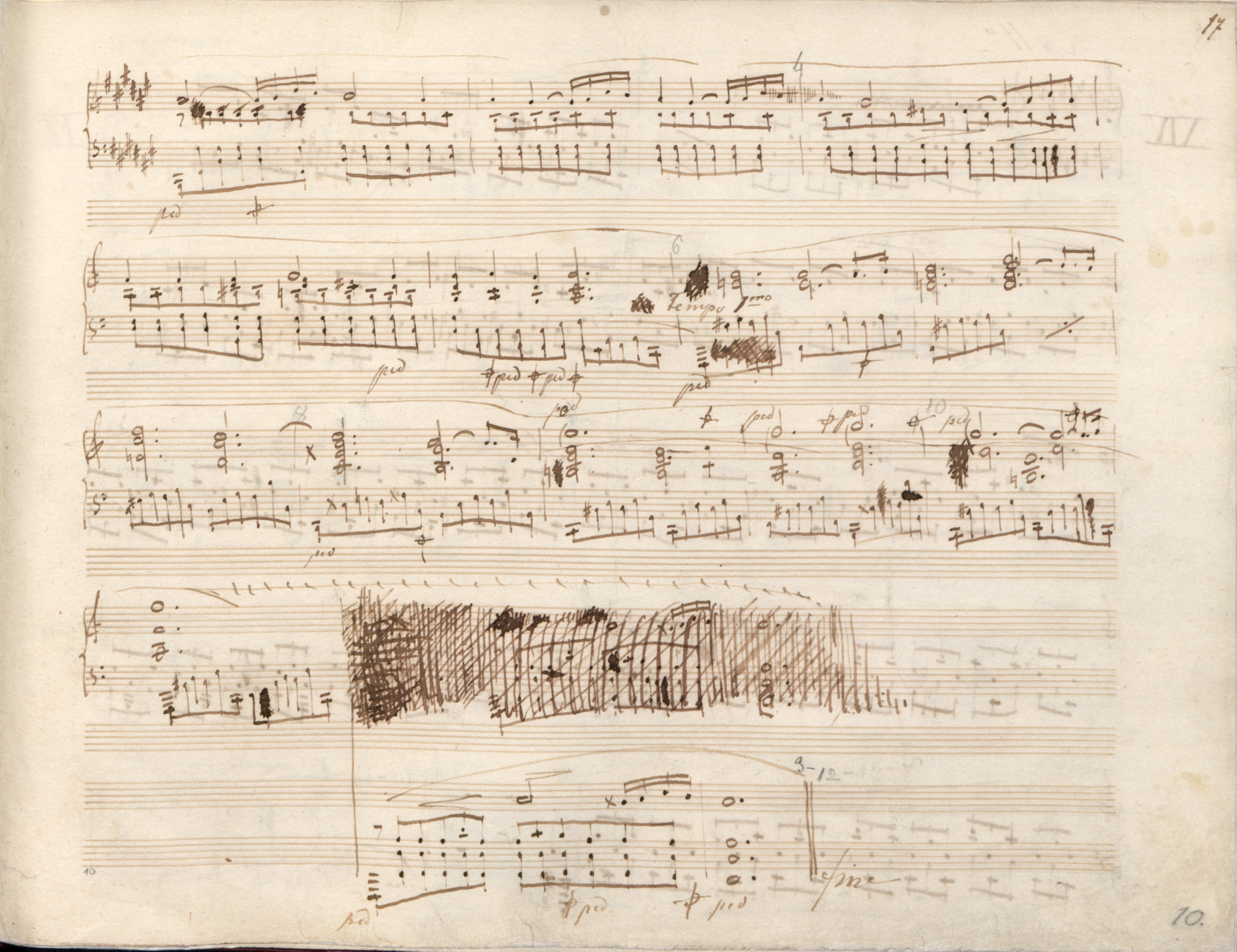Op. 2, Variations in B♭ major
Op. 10, 12 Etudes
Op. 11, Concerto in E minor
Op. 21, Concerto in F minor
Op. 22, Polonaise in E♭ major
Op. 24, 4 Mazurkas
Op. 25, 12 Etudes
Op. 26, 2 Polonaises
Op. 27, 2 Nocturnes
Op. 28, 24 Preludes
Op. 30, 4 Mazurkas
Op. 35, Sonata in B♭ minor
Op. 50, 3 Mazurkas
Op. 63, 3 Mazurkas
Op. 64, 3 Waltzes
(Op. 4), Sonata in C minor




Op. 28 No. 13, Prelude in F♯ major
In FES, at the end of the bar, one can see a poorly legible pencilled entry, probably performed by Chopin. The relatively distinct part of that entry consists of 4 notes; the stems of two point upwards, while of the other two – downwards. Together, they form a pair of dyads:  . The bottom notes are almost certainly f
. The bottom notes are almost certainly f 1, whereas the top ones are at a different pitch, yet both are on the 2nd space, which could result in a
1, whereas the top ones are at a different pitch, yet both are on the 2nd space, which could result in a 1-b1 or g
1-b1 or g 1-a
1-a 1 (g
1 (g 1-a
1-a 1?). Indistinct traces of pencil can also be seen further, but we did not manage to identify them (they were removed?). We suggest the following reconstruction of the entry (in two versions); however, it should be mentioned that it is of a hypothetical nature:
1?). Indistinct traces of pencil can also be seen further, but we did not manage to identify them (they were removed?). We suggest the following reconstruction of the entry (in two versions); however, it should be mentioned that it is of a hypothetical nature:  or
or  .
.
When the added small notes are performed as semiquavers – the first together with b in the L.H. – they refer to the semiquaver motifs in b. 22, 24, 25 and 37.
Compare the passage in the sources »
category imprint: Graphic ambiguousness; Differences between sources; Source & stylistic information
issues: Annotations in teaching copies, Annotations in FES
notation: Pitch

